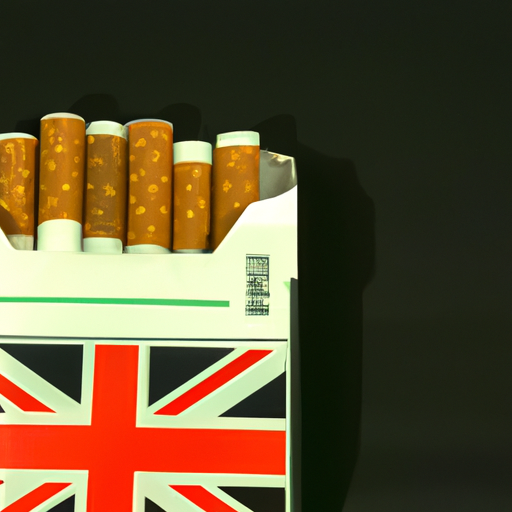
I am a smoker living in the UK, and cigarettes have become an integral part of my daily routine. However, there is so much more to cigarettes in the UK than simply lighting up and taking a drag. In this article, I will delve deeper into the world of cigarettes in the UK, including the history, regulations, and impact on the country.
The history of cigarettes in the UK can be traced back to the 16th century when they were introduced to England by Spanish and Portuguese sailors. Initially, it was considered a luxury and was only affordable for the upper class. However, with the industrial revolution and introduction of mass production, cigarettes became more affordable for the common people.
In the 19th century, the harmful effects of smoking started to become apparent, and the first anti-smoking campaign was launched in the UK. However, it wasn’t until the mid-20th century that the link between smoking and diseases like lung cancer was scientifically established. This led to the UK government taking action to regulate the production and consumption of cigarettes.
Today, smoking is still a prevalent habit in the UK, with approximately 15% of the adult population being regular smokers. However, the smoking rate has significantly declined over the years, thanks to various anti-smoking campaigns and government regulations.
One of the most significant regulations in the UK is the ban on smoking in public spaces, which was implemented in 2007. This ban prohibits smoking in enclosed public spaces, such as bars, restaurants, and offices, as well as public transportation. This has not only helped in reducing exposure to second-hand smoke but has also encouraged smokers to reduce their consumption or quit altogether.
Another important regulation is the implementation of graphic health warnings on cigarette packs. Since 2008, all cigarette packs in the UK must have warning labels covering 65% of the front and back of the pack. These graphic images, showing the harmful effects of smoking, have been proven to be effective in discouraging people from starting or continuing to smoke.
Moreover, the UK government has also raised the legal age for buying cigarettes from 16 to 18 years old. This has made it more difficult for young people to access cigarettes, reducing the likelihood of them picking up the habit.
While these regulations have undoubtedly had a positive impact, cigarettes are still a huge problem in the UK. They are responsible for around 100,000 deaths every year and are the leading cause of preventable diseases. The UK government spends billions of pounds every year on treating smoking-related illnesses, putting a significant strain on the healthcare system.
So why do people continue to smoke despite the known health risks and strict regulations? As a smoker in the UK, I can say that it is primarily due to addiction and societal pressure. Smoking has become a way of socializing and coping with stress for many people. It is also heavily ingrained in our culture, and it can be challenging to break away from this habit.
Another reason for the persistence of smoking is the clever marketing techniques used by tobacco companies. Despite a ban on advertising cigarettes, companies have found ways to promote their products through packaging and sponsorship deals. The rise of e-cigarettes and vaping has also been marketed as a “healthier” alternative to traditional cigarettes, making it more socially acceptable to smoke.
As a result of these factors, the UK government has introduced various measures to further reduce smoking rates. One of the most recent and controversial measures is the introduction of plain packaging for cigarettes. All cigarette packs must now have a uniform design, with no branding or logos, and only the brand name in standard font. The idea behind this measure is to reduce the appeal of cigarettes, particularly to young people who may be influenced by packaging design. While this measure has its fair share of critics, it has been shown to be effective in reducing smoking rates in countries like Australia, which implemented a similar law.
Despite the decline in smoking rates, cigarettes are still very much a part of the UK, and the tobacco industry continues to thrive. In 2019, the industry made a profit of over £15 billion, and taxes from cigarettes brought in around £9.5 billion for the government. This poses a moral dilemma for the government as it has a responsibility to reduce smoking rates, but also relies on the revenue from the tobacco industry.
In conclusion, cigarettes in the UK have a long and complex history, and despite the strict regulations and health warnings, they remain a significant issue in the country. While measures such as the ban on smoking in public spaces and graphic health warnings have been effective in reducing smoking rates, it is essential to continue to find ways to discourage people from smoking and support those who want to quit. As a smoker myself, I am aware of the health risks associated with cigarettes, but breaking the addiction is easier said than done. We must work together as a society to create a smoke-free UK for a healthier and happier future.